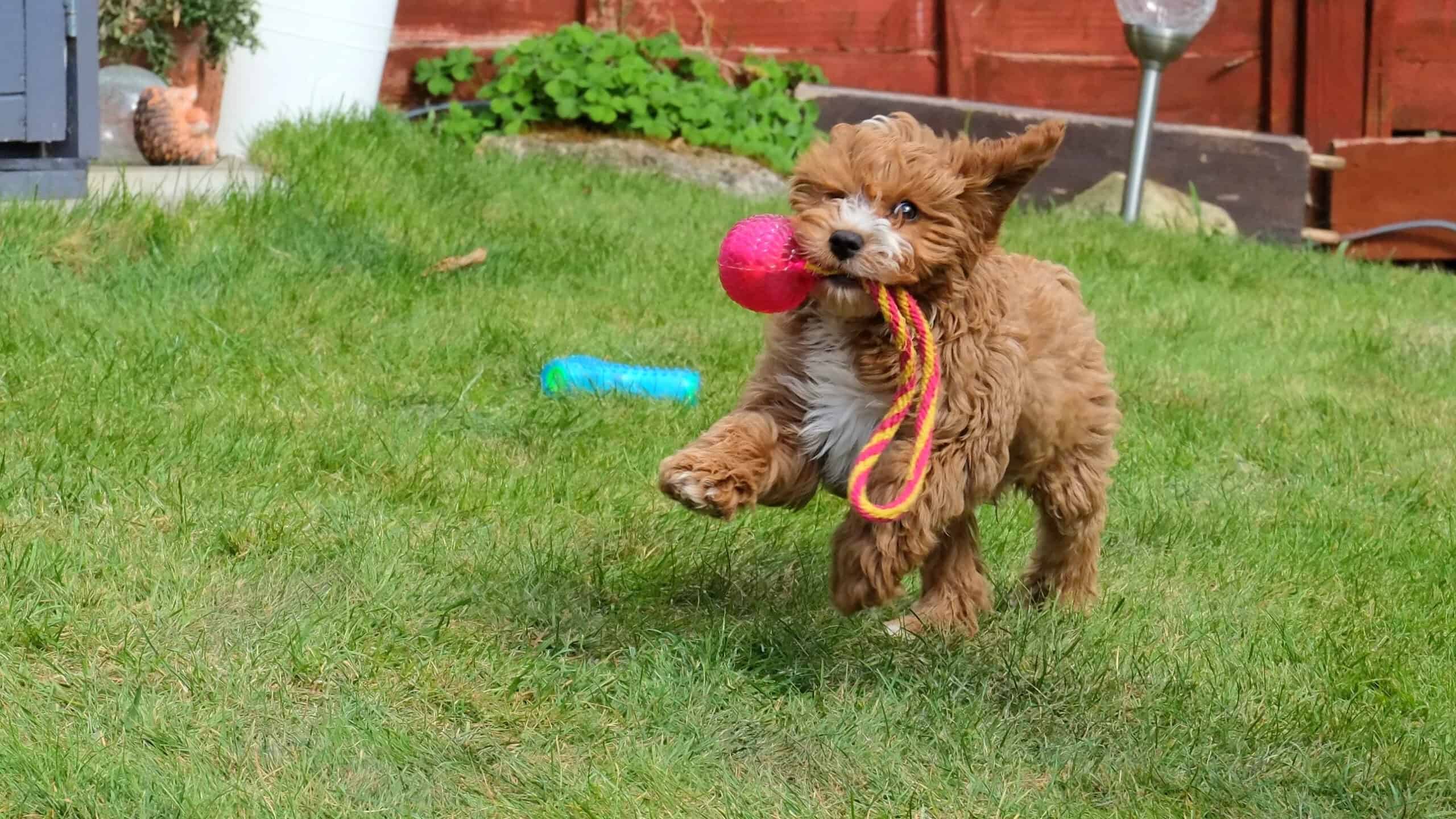When it comes to finding the perfect addition to a family, considering the compatibility between a four-legged friend and the children at home is crucial. Enter the Cavapoo, an irresistibly charming hybrid breed that combines the endearing qualities of Cavalier King Charles Spaniels and Poodles. Renowned for their affectionate nature and playful demeanor, Cavapoos have been gaining popularity as an excellent choice for families with kids. But are Cavapoos truly good with kids?
In this article, we will delve into their temperament, adaptability, and nurturing instincts to determine whether these adorable canines are a match made in heaven for little ones. Whether you're considering a Cavapoo as a potential addition to your family or simply curious about their compatibility with kids, read on to unravel the truth about their suitability as furry companions for children!
Are Cavapoo Good With Kids?

Cavapoos are a great addition to most families, including those with kids.
©Liudmila Bohush/Shutterstock.com
Cavapoos possess a natural compatibility with children, making them an excellent choice for families seeking a four-legged friend. Their gentle temperament, adaptability, and nurturing instincts contribute to their ability to engage and interact with kids of all ages. Let’s explore each of these attributes further and see how they interact with kids!
Temperament Compatibility
Cavapoos are renowned for their gentle and friendly nature, making them excellent companions for children. With their Cavalier King Charles Spaniel lineage, these hybrids possess a naturally relaxed and sociable disposition. They tend to be patient, loving, and eager to please, making them well-suited to interact with children of all ages. Cavapoos are rarely aggressive, and they are often quick to form strong bonds with their human family members.
Adaptability Compatibility
Another crucial factor to consider when assessing the compatibility between Cavapoos and kids is their adaptability. These intelligent dogs are highly adaptable to different environments, including family households. Whether it's joining in on active playtime or enjoying a quiet snuggle session, Cavapoos are known for adjusting their energy levels according to their surroundings. As long as adequate exercise and mental stimulation are provided, Cavapoos can seamlessly fit into various family routines.
Nurturing Instincts Compatibility
Cavapoos exhibit excellent nurturing instincts that make them natural companions for children. Their gentle and caring nature often extends beyond their immediate human family to include younger family members. They are known to be patient, protective, and mindful around children, making them a reliable and dependable presence for kids to rely on.
What Are Some Potential Risks To Consider When Having A Cavapoo Around Kids?
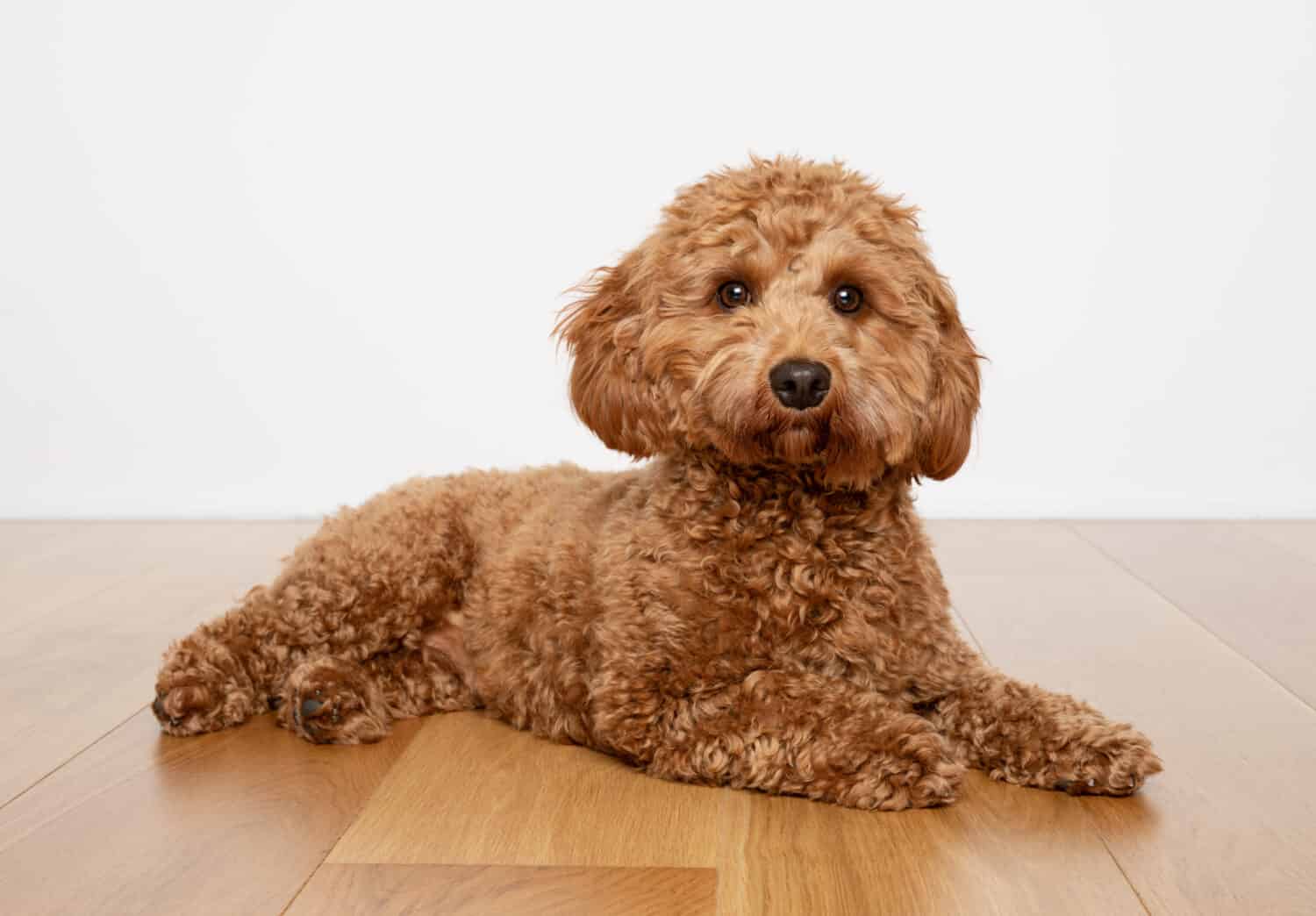
As with any pet, it is important to be aware of any potential risks when bringing a Cavapoo into your family.
©David Calvert/Shutterstock.com
When considering the compatibility between Cavapoos and kids, it is essential to be aware of potential risks. While Cavapoos generally have a good temperament and are known to be great with children, it's important to be cautious and take certain factors into consideration. Here are some potential risks to be mindful of:
Allergies: Some children may have allergies to dogs, including Cavapoos. Before bringing a Cavapoo into your home, it's vital to ensure that no family members have allergies or sensitivities to the breed. Consider consulting with an allergist or conducting allergy tests if necessary.
Exercise and Energy: Cavapoos are active dogs that require regular exercise and mental stimulation. If you have young children who may not be able to keep up with the dog's exercise needs, it's important to assess whether you can provide appropriate outlets for the dog's energy. Failure to meet their exercise requirements may lead to behavioral issues or frustration in the dog.
Supervision: While Cavapoos are generally gentle and well-mannered, it's crucial to supervise interactions between young children and dogs at all times. This is to ensure the safety of both the child and the dog. Teach children how to approach and handle the dog properly to prevent any accidental harm or discomfort.
Training and Socialization: Proper training and socialization play a vital role in shaping a dog's behavior. While Cavapoos are typically easy to train, it is important to invest time and effort into their obedience training and early socialization. This will help establish boundaries, prevent potential behavioral issues, and ensure a positive and safe interaction between the dog and children.
Size and Fragility: Cavapoos come in various sizes, depending on their parentage. Smaller Cavapoos may be more delicate and prone to injuries if mishandled or accidentally dropped by young children. Care should be taken to teach children to be gentle and considerate when interacting with smaller or more fragile dogs.
What Age Is Appropriate For Kids To Interact With A Cavapoo?
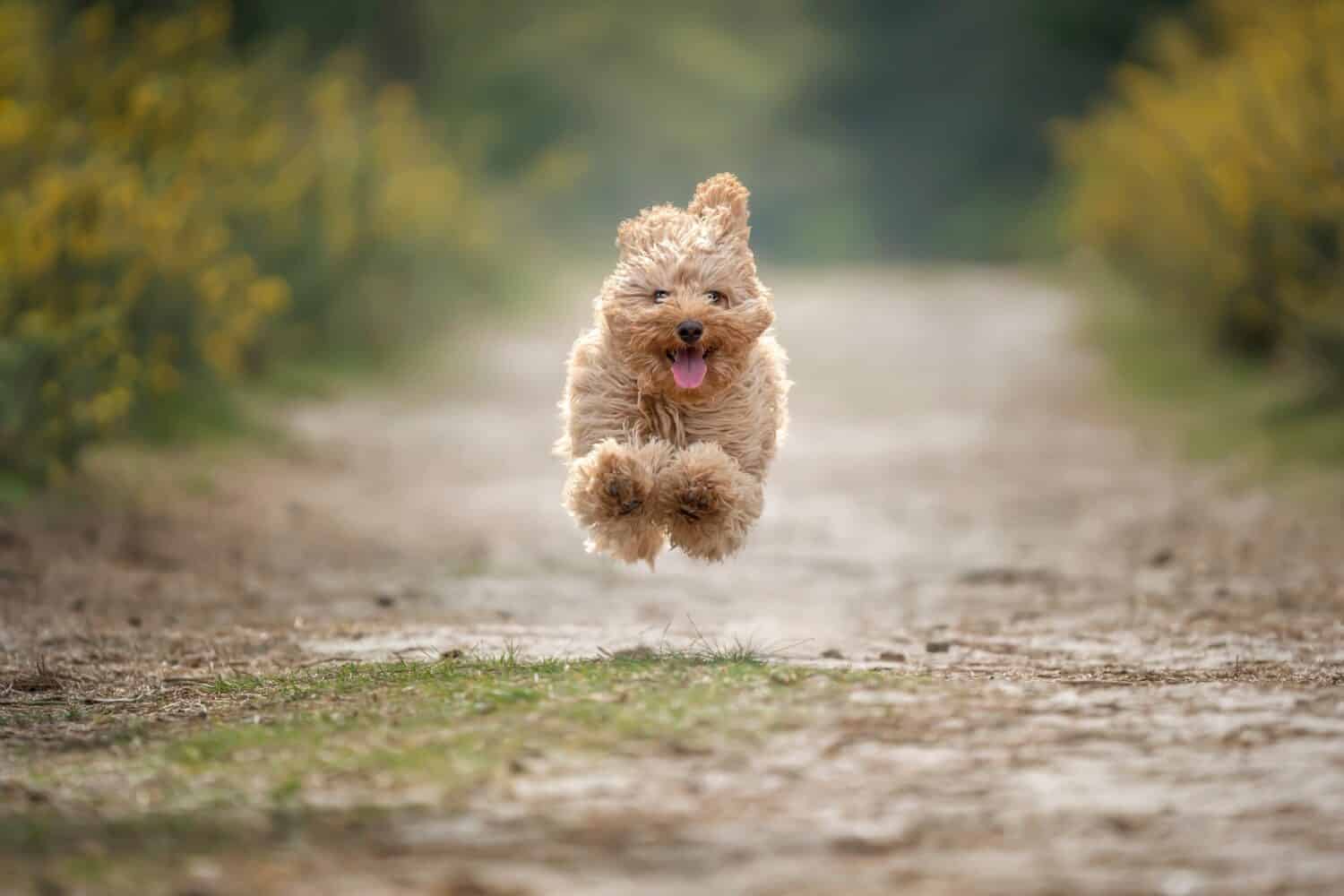
Cavapoos have a lot of energy and should always be supervised around small children.
©chrisukphoto/Shutterstock.com
Cavapoos are generally good with children and enjoy human interaction. However, the appropriate age for kids to interact with a Cavapoo may vary depending on the child and the dog's temperament. Here are some considerations:
Supervision and Safety: The interaction between young children and dogs should always be supervised to ensure the safety of both the child and the dog. Even a well-behaved dog may react unpredictably in certain situations. It's important for adults to closely monitor interactions and intervene if necessary.
Understanding Dog Behavior: Children should be old enough to understand and respect a dog's boundaries. They should learn how to approach a dog gently and avoid behaviors that may frighten or harm the dog. It's essential to teach children not to pull ears, tail, or other body parts, and not to disturb the dog while eating or sleeping.
Dog's Temperament: The temperament of both the Cavapoo and the child is crucial. Some Cavapoos may be more patient and tolerant, while others may be less so. Likewise, some children may be more gentle and calm, while others may be more energetic and less aware of their actions.
Education and Training: Teaching children about responsible dog ownership, proper interaction, and basic dog behavior can help create a positive environment for both the child and the Cavapoo. They should understand that animals have feelings and needs and should be treated with kindness and respect.
Parents' Assessment: Ultimately, parents should use their judgment to determine when their child is ready to interact with a Cavapoo. Consider the child's maturity, ability to follow instructions, and familiarity with dogs. Some children may be ready at a young age, while others may need to wait until they are older.
How To Train A Cavapoo To Be Good With Kids
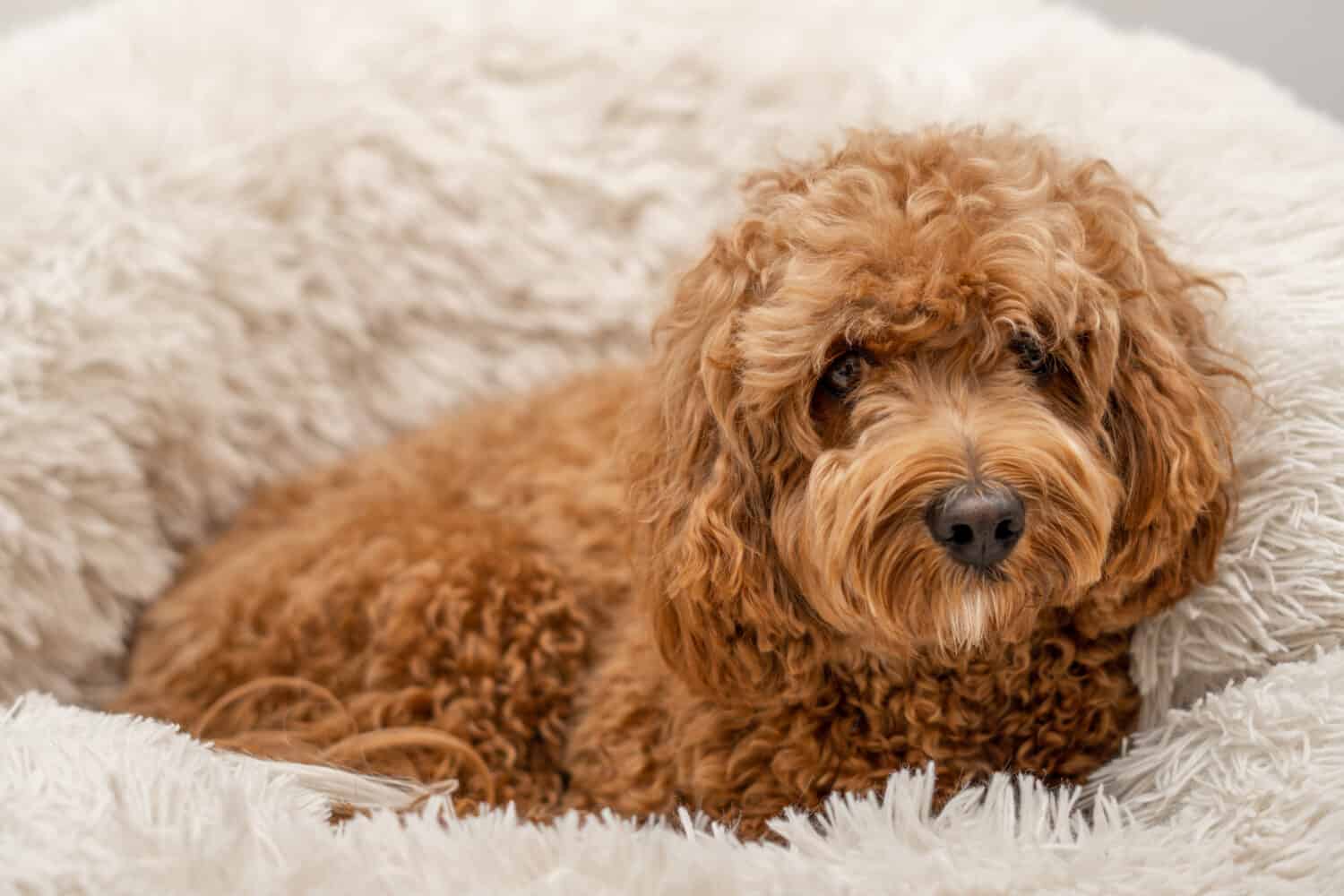
It is important to train your Cavapoo to understand socialization through positive reinforcement.
©Unwind/Shutterstock.com
Training a Cavapoo to be good with kids involves a combination of socialization, positive reinforcement, and consistent training techniques. Here are some steps to consider:
Early Socialization: Start socializing your Cavapoo from a young age. Introduce them to children of different ages, sizes, and energy levels. Gradually expose them to various environments, sights, sounds, and experiences. This helps them become comfortable and confident around kids.
Positive Reinforcement: Use positive reinforcement techniques, such as treats, praise, and play, to reward your Cavapoo for good behavior around children. Encourage calm and gentle interactions. Reinforce positive behaviors, such as sitting or staying calm when children approach, with rewards.
Set Boundaries: Teach your Cavapoo appropriate boundaries when interacting with kids. Help them understand what acceptable behavior is, such as not jumping on children or nipping during play. Use commands like “off” or “gentle” to communicate expectations.
Teach Basic Commands: Train your Cavapoo in basic obedience commands like sit, stay, come, and leave it. These commands help establish control and prevent undesirable behaviors. They also come in handy when managing interactions between your Cavapoo and kids.
Supervise Interactions: Always closely supervise interactions between your Cavapoo and children, especially in the beginning. Redirect or remove your dog from the situation if they exhibit unwanted behaviors or become overly excited. Reinforce positive behavior with rewards.
Gradual Exposure: Gradually expose your Cavapoo to different activities and situations involving children. This includes supervised playdates, outings to parks or playgrounds, and family gatherings. This helps your Cavapoo develop positive associations and build confidence around kids.
Model Calm Behavior: As an owner, model calm and gentle behavior when interacting with kids. Dogs often take cues from their owners, so if you remain calm and patient, it can help your Cavapoo feel at ease around children.
Consistency: Maintain consistent training and reinforce positive behaviors throughout your Cavapoo's life. Regular training sessions, refreshers, and continued socialization are important to ensure your Cavapoo remains well-behaved around kids.
How To Teach A Kid To Be Good With A Cavapoo
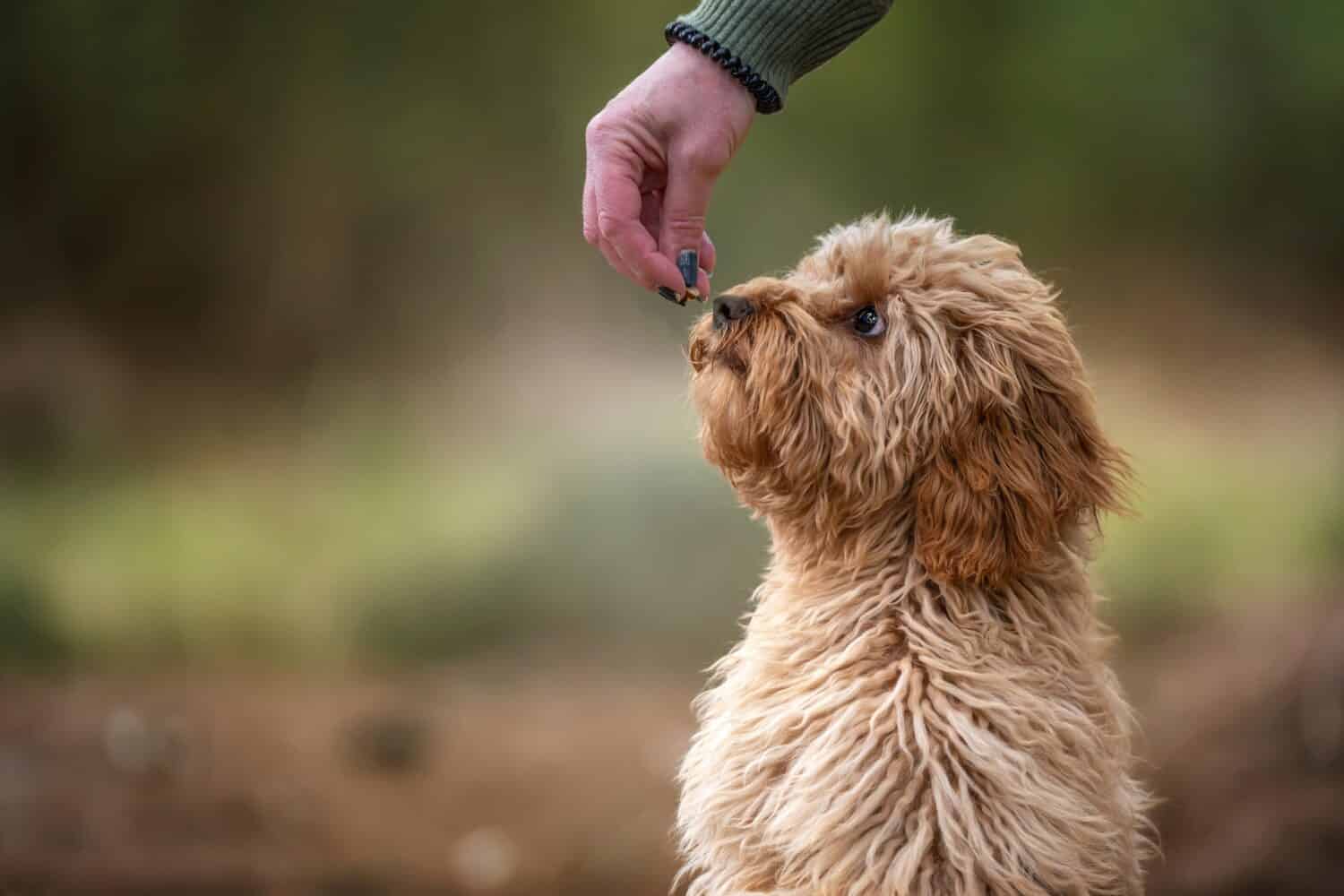
It is vital to teach your kids to be good and gentle with any pet, including a Cavapoo.
©chrisukphoto/Shutterstock.com
Teaching a child to be good with a Cavapoo involves educating them about proper dog behavior, teaching gentle interaction, and setting boundaries. Here are some guidelines:
Education: Teach the child about Cavapoo behavior, needs, and body language. Explain that dogs have feelings and boundaries, and it is important to respect them. Help the child understand that a Cavapoo is not a toy and should be treated with kindness and care.
Gentle Interaction: Demonstrate and guide the child on how to approach and interact with the Cavapoo gently. Show them how to pet the dog softly and avoid grabbing or pulling on their ears, tail, or fur. Encourage the child to speak softly and avoid sudden movements that may startle the dog.
Supervision: Always supervise interactions between the child and the Cavapoo. Ensure the child does not engage in rough play or chase the dog. Teach them to recognize signs of stress or discomfort in the dog, such as growling, lip licking, or trying to move away.
Teach Boundaries: Instruct the child to respect the dog's personal space and not to disturb them while they eat, sleep, or rest. Help them understand that the Cavapoo may need alone time or space and should be allowed to retreat to a designated area if desired.
Positive Reinforcement: Encourage the child to use positive reinforcement and reward the Cavapoo for good behavior. Teach them to offer treats or praise when the dog follows commands, sits calmly, or behaves well around them. This helps create a positive association between the child and the dog.
Teach Commands: Show the child how to give basic commands to the Cavapoo, such as “sit” or “stay.” This helps the child establish leadership and build a bond with the dog. Supervise and assist the child when practicing these commands to ensure both the child and the dog feel comfortable.
Set Rules: Establish clear rules for the child regarding their interaction with the Cavapoo. For example, they should not bother the dog when they are resting or eating, and they should not tease or provoke the dog. Consistency in enforcing these rules is essential.
Encourage Responsibility: Give the child age-appropriate tasks related to caring for the Cavapoo, such as feeding or grooming under supervision. This helps teach responsibility and build a sense of empathy towards animals.
In Conclusion
While Cavapoos generally have a good track record of being compatible with children, it's important to be aware of potential risks associated with their presence in a household with kids. Allergies, exercise needs, supervision, training, and the size of the dog are important factors to consider. It's important to prioritize the safety and well-being of both the child and the dog and to provide proper supervision and education to ensure positive and enjoyable interactions. Ultimately, with proper care, training, and supervision, a Cavapoo can become a beloved and cherished family pet for children.
The image featured at the top of this post is ©David Bryant/Shutterstock.com
